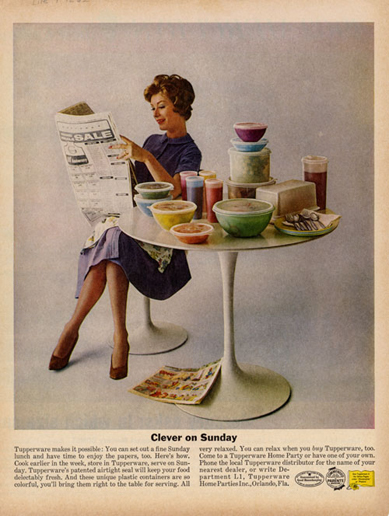Post-WWII: The Housewife and The Modern Family
Even though women were given new, never before seen opportunities in the working world during World War Two, when the war was over, there was a huge initiative by the government to regain normalcy. Industries fired Women in roves, and men were given their jobs back. The 1940s was when the debate surrounding a woman working versus staying home began to climb. Women’s need to support men by working in the factory was transferred to the new need to support them at home. Some women were happy to return to domestic life, while others struggled to maintain the perfect life they were supposed to live. A renewed type of work was pushed onto women, the work of the home. Women were pressured into this role by media, and magazines. The picturesque family with the perfect woman, the powerhouse hind the perfect man, was plastered everywhere. A subset of women, like Betty Friedan, found themselves unsatisfied with their new role as housewives and the reversal of societal norms that occurred at the tail end of the 1940s. This frustration was one of the many factors that influenced the revival of feminism, eventually leading to the second wave of feminism in the 1960s.
